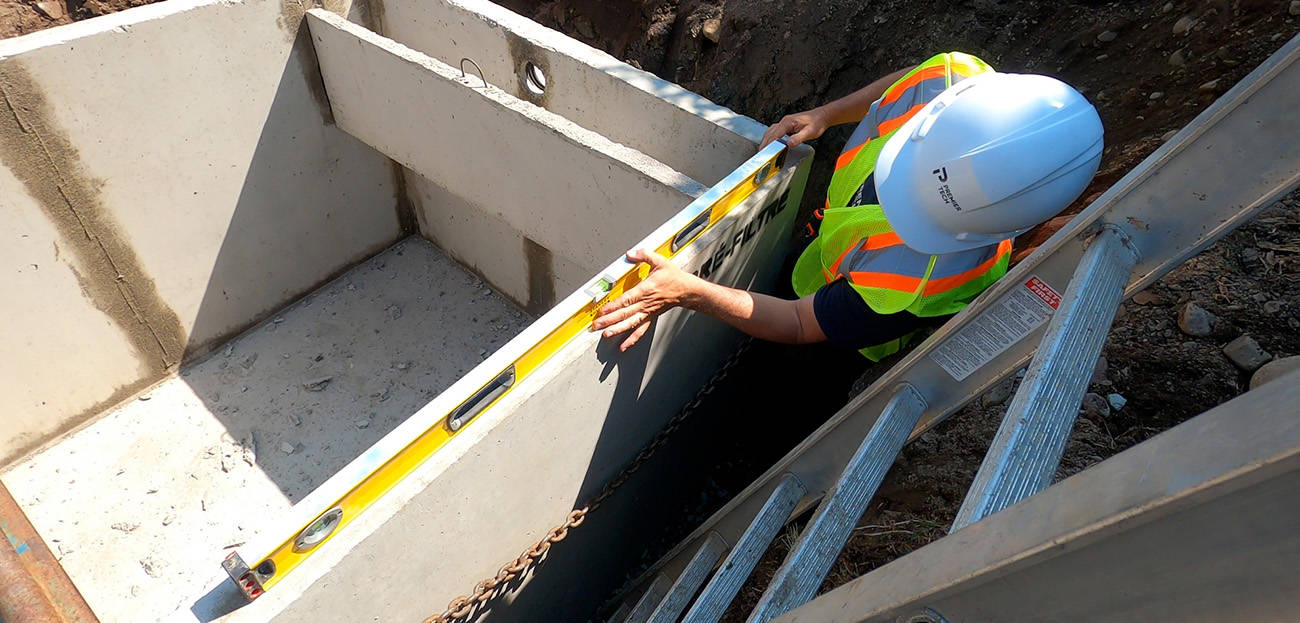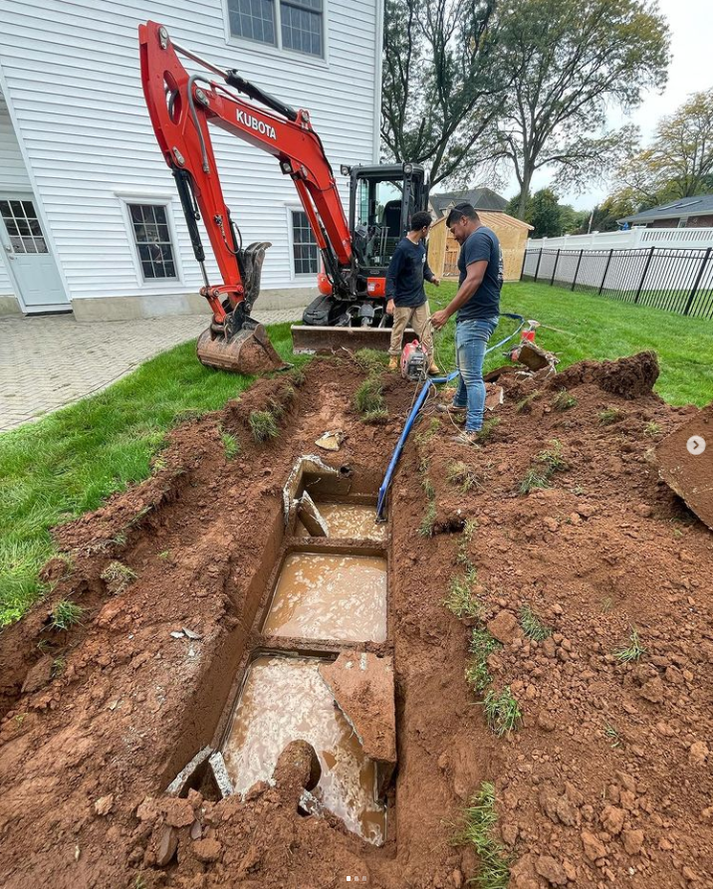Residential and Commercial Septic Tank Pumping: Tailored Solutions for every single Requirement
Translating the Language of Septic System Providers: A Reference of Terms for Clear Interaction and Comprehending
Are you puzzled by the jargon made use of in sewage-disposal tank services? Do not fret, we've got you covered! In this write-up, we'll assist you translate the language of sewage-disposal tank solutions with a handy reference of terms. From understanding the basics of your sewage-disposal tank to managing sludge accumulation, we'll offer clear descriptions to guarantee clear communication and understanding. State bye-bye to complication and hello to a well-kept septic tank!
Septic Storage Tank: Recognizing the Basics

If you are unknown with septic systems, they are below ground containers that deal with and hold wastewater from your family. These tanks are a crucial part of your home's plumbing system, in charge of safely and properly taking care of the waste created by your day-to-day tasks. Understanding the essentials of sewage-disposal tanks is critical in order to guarantee their correct capability and stay clear of expensive repair work.
A septic tank contains two major elements: the storage tank itself and the drainfield. The storage tank is where the wastewater streams into, and it is designed to divide solids from fluids. The solids clear up at the bottom of the tank, creating a layer of sludge, while the liquids, understood as effluent, rise to the top. The effluent after that flows right into the drainfield, where it is more dealt with and dispersed right into the surrounding soil.
Regular upkeep of your septic system is important to stop problems such as obstructions, backups, and system failings. It is recommended to have your container pumped every three to 5 years, depending upon its dimension and use. In addition, it is essential to be conscious of what you flush away and toilets, as certain chemicals and materials can harm the microbial equilibrium in the storage tank.
Drainpipe Area: The Function of Dirt in Waste Disposal
To keep the proper functionality of your sewage-disposal tank system, it is crucial to comprehend the function of the drainpipe field in garbage disposal and just how the bordering dirt plays a crucial duty in this process. The drain area, additionally known as the leach field or absorption area, is a vital element of a septic tank. Its primary function is to filter and treat the wastewater that spurts of the septic container.
Once the wastewater leaves the sewage-disposal tank, it is dispersed equally throughout the drainpipe area via a network of pipes or trenches. The drain field includes a layer of crushed rock or rock, which helps to distribute the wastewater uniformly and promote effective filtering. Listed below the crushed rock layer, there is a layer of dirt that works as an all-natural filter.
The dirt in the drain area plays an important function in the therapy of wastewater. As the wastewater percolates with the dirt, it undergoes a natural process of filtration and purification. The soil serves as a physical and biological filter, eliminating harmful bacteria, viruses, and various other contaminants from the wastewater.
The structure and high quality of the soil are important for the efficient performance of the drainpipe field - septic tank pumping. The dirt needs to have great percolation prices to enable the wastewater to move through it quickly. Additionally, the soil should have enough oxygen degrees to sustain the development of cardiovascular germs, which aid in the malfunction of raw material in the wastewater

Effluent: the Fluid Waste From Your Septic System
As the wastewater leaves the drainpipe area, it is referred to as effluent, and it is essential to recognize the features and management of this fluid waste from your septic tank. Effluent is the term utilized to define the treated wastewater that drains of your sewage-disposal tank and into the drainpipe field. septic tank pumping. This liquid waste has a mixture of water, natural matter, and dissolved solids
Effluent need to be clear and complimentary of any type of undesirable odors. If you discover any kind of nasty smells or discoloration, maybe an indicator of a trouble with your septic tank. Normal upkeep and pumping of your septic tank can assist ensure that the effluent continues to be clean and totally free from impurities.
Correct administration of effluent is important to avoid contamination of the surrounding environment. The drainpipe field is designed to filter and deal with the effluent prior to it gets in the soil. It is necessary to stay clear of any type of activities that could potentially harm the drain field, such as parking lorries or growing trees with deep root systems.
Sludge: Dealing With Solid Waste Accumulation
When dealing with strong waste buildup in your septic tank, correct management of sludge is crucial. Sludge refers visit homepage to the thick layer of strong waste that builds up at the bottom of your sewage-disposal tank in time. Otherwise managed correctly, sludge can cause numerous issues, such as obstructing, backups, and also system failing.
Routine maintenance is vital to avoid sludge buildup. It is recommended to have your septic system pumped every three to five years, depending upon the size of your home and the container's capacity. Pumping removes the collected sludge, enabling your septic system to operate effectively.
Along with routine pumping, there are a couple of steps you can require to decrease sludge accumulation. First, bear in mind what you purge away. Stay clear of taking care of non-biodegradable items, such as paper towels, diapers, and hygienic products. These can add to sludge buildup. Second, consider using septic-safe products that will not disrupt the natural bacterial equilibrium in your system.
Pumping: Preserving the Health And Wellness of Your Septic Storage Tank
Preserve the health of your septic tank by routinely pumping it. Over time, strong waste and sludge collect in the tank, which can lead to blockages, backups, and even system failure.
Regular pumping is recommended to avoid the sludge from getting to high degrees. The regularity of pumping relies on different elements such as the size of the container, the variety of passengers in your home, and the use of water. Usually, sewage-disposal tanks ought to be pumped every 3 to 5 years. However, it is necessary to keep in mind that every system is special, and it's best to seek advice from an expert to identify the optimal pumping schedule for your specific circumstance.
Conclusion
So there you have it: a convenient glossary of terms to assist you much better comprehend the language of septic system solutions. Whether it's finding out about the essentials of septic link tanks, comprehending the role of the drainpipe area, or knowing exactly how to deal with sludge build-up, this glossary will make sure clear interaction and a better understanding of your septic tank. Maintain these terms in mind to maintain the health her latest blog and performance of your septic tank.
A septic tank is composed of two main parts: the storage tank itself and the drainfield.Normal maintenance of your septic container is necessary to protect against issues such as clogs, back-ups, and system failings.To keep the proper capability of your septic storage tank system, it is critical to understand the role of the drain field in waste disposal and just how the bordering soil plays a key role in this process. It is advised to have your septic container pumped every 3 to 5 years, depending on the dimension of your house and the tank's capacity. Whether it's learning about the basics of septic containers, comprehending the function of the drain field, or knowing how to deal with sludge accumulation, this reference will certainly make certain clear communication and a far better understanding of your septic system.